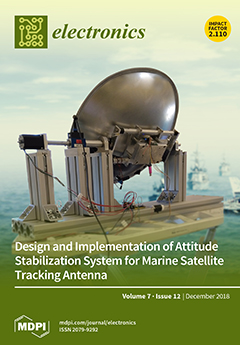Open AccessArticle
Solution-Processable ZnO Thin Film Memristive Device for Resistive Random Access Memory Application
by
Swapnil R. Patil 1,†, Mahesh Y. Chougale 1,†, Tushar D. Rane 1,†, Sagar S. Khot 1, Akshay A. Patil 1, Ojus S. Bagal 1, Sagar D. Jadhav 1, Arif D. Sheikh 1, Sungjun Kim 2,* and Tukaram D. Dongale 1,*
1
Computational Electronics and Nanoscience Research Laboratory, School of Nanoscience and Biotechnology, Shivaji University, Kolhapur 416004, India
2
School of Electronics Engineering, Chungbuk National University, Cheongju 28644, Korea
†
Authors contributed equally to this manuscript.
Cited by 42 | Viewed by 6082
Abstract
The memristive device is a fourth fundamental circuit element with inherent memory, nonlinearity, and passivity properties. Herein, we report on a cost-effective and rapidly produced ZnO thin film memristive device using the doctor blade method. The active layer of the developed device (ZnO)
[...] Read more.
The memristive device is a fourth fundamental circuit element with inherent memory, nonlinearity, and passivity properties. Herein, we report on a cost-effective and rapidly produced ZnO thin film memristive device using the doctor blade method. The active layer of the developed device (ZnO) was composed of compact microrods. Furthermore, ZnO microrods were well spread horizontally and covered the entire surface of the fluorine-doped tin oxide substrate. X-ray diffraction (XRD) results confirmed that the synthesized ZnO was oriented along the c-axis and possessed a hexagonal crystal structure. The device showed bipolar resistive switching characteristics and required a very low resistive switching voltage (±0.8 V) for its operation. Two distinct and well-resolved resistance states with a remarkable 10
3 memory window were achieved at 0.2-V read voltage. The developed device switched successfully in consecutive 10
2 switching cycles and was stable over 10
2 seconds without any observable degradation in the resistive switching states. In addition to this, the charge–magnetic flux curve was observed to be a single-valued function at a higher magnitude of the flux and became double valued at a lower magnitude of the flux. The conduction mechanism of the ZnO thin film memristive device followed the space charge limited current, and resistive switching was due to the filamentary resistive switching effect.
Full article
►▼
Show Figures





